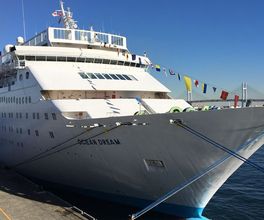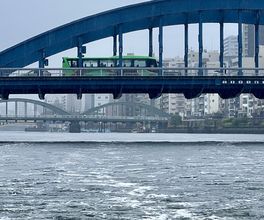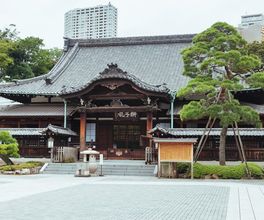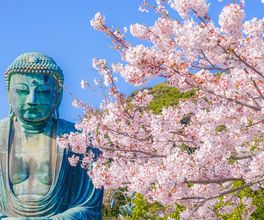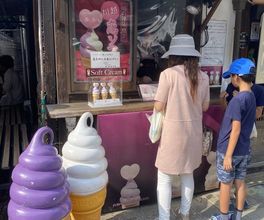

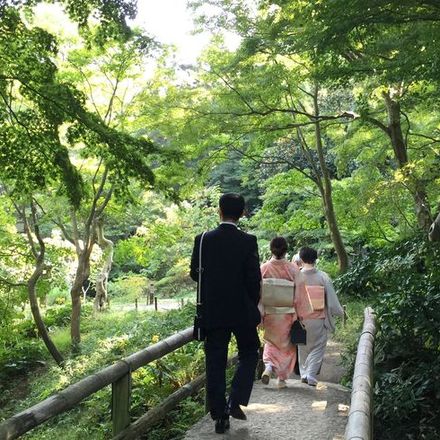

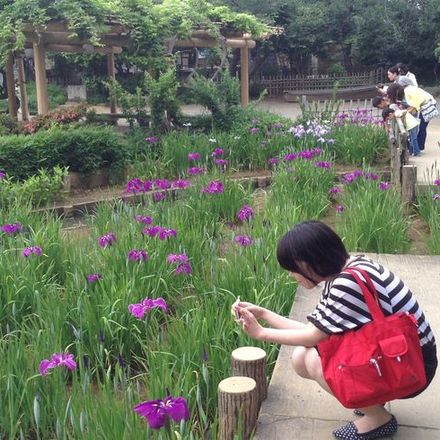
About this experience
Where to go if you feel like adding something traditional to the modern history of Japan in a metropolis like Tokyo and Yokohama? Your path should lead to the Honmoku area in Sankei-en - the most "Japanese" attraction in Yokohama and my favorite garden park. It is a true delight for aesthetes.
The large area of Sankei-en (which can be quickly reached by taxi from the Yamate area or JR Negishi station) includes not only the beauty of Japanese gardens, but also 17 unique buildings and architectural structures, mostly wooden, carefully dismantled plank by plank and transported by merchant Hara from Kyoto, Gifu, Wakayama to his estate in Yokohama at the beginning of the last century.
All the transported structures and buildings are in harmony with the surrounding nature, bridges and gazebos, ponds and hills, bamboo groves and a small waterfall. I especially recommend the views that open up to the three-story pagoda across the large pond with two-meter pink-green lotuses (now, in August), to the tea house from Fushimi Castle under Kyoto with green and bright yellow Japanese maples (on a sunny day in November), to the gigantic house of a wealthy farmer from Gifu (in winter, on a rare snowy day), to the house from the estate of one of the branches of the Tokugawa clan in the shoin architectural style, transferred from Wakayama Prefecture (in spring, when the Japanese apricot or later, during cherry blossom season).
Art aesthetes, finding themselves in Sankei-en on a rainy day, can rest and enjoy a cup of matcha green tea (additional 5 euros), whisked into a thick foam by a bamboo whisk by the hands of elegant grandmothers and grandfathers in kimonos from the local tea ceremony circle, and explore a small museum gallery inside the park, where a collection of paintings is displayed, in which Sankei Hara had an eye for detail (there are several of his works - and I especially like the one with a cat and a peony).
On the way back, you will most likely not bypass the "Port of the Future", Minato-Mirai, Yokohama's landmark. If so, do not rush back to the hotel immediately - in good weather, take a walk along the waterfront past the marine terminal with a wooden deck, where you will have a wonderful view of the "Port of the Future" in the rays of the sunset or in the nighttime illumination.
This view of Yokohama's main attraction will allow you to enjoy the sight, avoiding crowds on the observation deck of the city's tallest building (Landmark Tower) and the maze of shops and restaurants below. If you happen to be here still early in the winter, when the air is dry and clear, perhaps Mount Fuji on the horizon will wink at you with its snowy peak. Staying there until darkness falls, you will be rewarded with the spectacle of the city's night panorama.
And the souvenirs with a maritime theme from Yokohama for you and your loved ones won't disappear - in the marine terminal building under the deck where you just enjoyed the city view, there are several souvenir shops with quality products.
The tour is suitable for anyone interested in Japanese gardens, landscape design. I highly recommend this walk to those interested in Japanese architecture and those eager to see architecture from different historical eras in one place.
Organizational Details
- Entrance fee to the park is included in the price, as well as my transport expenses to Yokohama station.
- Participants' transport expenses are not included. They will be approximately 2 euros from Yokohama or Sakuragicho stations (bus). Instead, I would recommend taking a taxi from Negishi station, which may cost between 15-25 euros depending on the taxi company.
From central Tokyo to Yokohama, travel time and transportation costs (express train) can range from half an hour to 1 hour, costing between 4-6 euros (details in personal correspondence). - Don't like to figure out transportation schedules? I can pick you up directly from your hotel in Tokyo or Yokohama if it is near certain stations, and we will choose a mutually convenient time.
- The cost of the tour includes the park entrance fee (approx. 5 euros per person). The amount assumes no more than five participants and will not change depending on whether you are booking the tour for five people or one.
- Sankei-en is open from 9 am (admittance until 4:30 pm).
- Summer visitors who enjoy blooming lotuses are allowed to enter the park as early as 6 am, when the flowers have not yet closed due to the heat. The park is also open in the evenings during the cherry blossom season (late March/early April), autumn foliage (late November), as well as a few days in June to see fireflies and in September to contemplate the full moon.
- If using a taxi from the station, remember - in Japan, having 4 passengers in the back seat is a safety violation.
